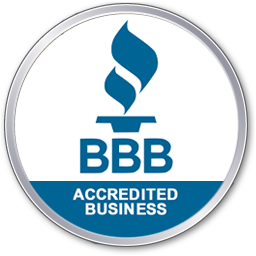Have you ever walked into your home and noticed an unusual smell or seen strange spots littered across your walls and ceilings and wondered what they could be? If this is the case, it’s possible that you may have a mold issue you need to address today.
Mold is a fungus type that can grow on a variety of surfaces and can cause a range of health problems if left unchecked. In this article, we’ll take a closer look at four common types of mold that you should be aware of:
- Black mold
- White mold
- Green mold
- Brown mold
We’ll also discuss how to identify mold types and what steps to take if you suspect a mold issue in your home.
Black Mold
Black mold is a type of fungus that’s typically black or dark green in color and has a musty or earthy smell. Black mold is one of the most common types of mold found growing in homes and is responsible for causing a range of health problems if left unchecked.
It’s commonly found in areas with high humidity and is most commonly found growing in bathrooms and basements. However, that doesn’t exclude other surfaces. Black mold can also be found growing on a variety of surfaces, including wood, paper, and insulation.
Additionally, if you’ve experienced water damage in your home, it’s important to be on the lookout for black mold growth, as it can grow in areas where water has collected.
Although black mold doesn’t affect everyone the same, those allergic to black mold may experience symptoms like:
- Skin rashes
- Respiratory problems
- Congestion
- Itchy, red eyes
- Allergies
- Other respiratory problems
If you’re exposed to black mold for an extended period of time, it can lead to more severe health issues like asthma.
If you suspect you have black mold in your home, there are a few key signs to look out for. These include:
- Musty or earthy smells
- Visible black or dark green spots on ceilings and walls
- Symptoms of exposure like respiratory problems or other health complications listed above
In order to identify black mold, you may need to perform a thorough inspection of your home, particularly in areas with high humidity or recent water damage. You may also want to use a flashlight or other light source to help you identify any hidden mold growth in the nooks and crannies.
If you’re unable to identify black mold on your own, or if you’re unsure of whether you have a mold problem, it’s advisable to consult with a qualified professional.
A professional mold inspector can assess the presence of mold in your home and recommend the appropriate steps for addressing it.
White Mold
Like black mold, white mold is a type of fungi that can grow on a variety of surfaces and materials, including wood, paper, and food. It’s often found in damp, humid environments and can cause damage to all types of buildings and structures.
There are several different types of white mold, including:
- Penicillium
- Aspergillus
- Fusarium
- Cladosporium
The most obvious way to identify white mold is by its appearance. It typically appears as a powdery or fluffy substance that’s white-gray in color. It may also present a musty or earthy smell.
White mold can grow in many different shapes and sizes and may be found in large clusters or as individual spores.
Regarding health risks, white mold also causes a range of respiratory problems, including:
- Allergies
- Asthma
- Skin irritation
- Eye irritation
- Pneumonia
- COPD attacks
- And more
Children, the elderly, and people with compromised immune systems are at an increased risk of developing more serious health problems if exposed to white mold.
You can commonly find white mold in areas with high humidity, such as basements, attics, and crawl spaces. It can also grow on any surface exposed to water damage or leaks.
In order to prevent white mold growth, it’s vital to keep the humidity levels low and to fix any leaks or water damage immediately.
Green Mold
Green mold is also a type of fungi that thrives in damp, humid environments and can grow in various materials and surfaces.
The most common types of green mold include:
- Cladosporium
- Aspergillus
- Penicillium
Green mold exposure can lead to various medical issues, particularly respiratory issues. For example, aspergillus can cause respiratory infections such as bronchitis and pneumonia, as well as lung inflammation. Meanwhile, penicillium can potentially cause lung inflammation and sinus infections.
Additionally, depending on the person, certain green molds can cause symptoms like allergic reactions manifesting as itchy hives, throat swelling, and difficulty breathing.
Similar to the other mold types, green mold is commonly found in areas with high humidity, such as basements, crawl spaces, and attics. It’s also found in areas exposed to water leaks or damages.
In order to prevent mass green mold growth, be sure to keep humidity levels as low as possible and fix any water damage or leaks immediately.
Brown Mold
Brown mold is a type of fungi that grows on materials with high cellulose content, such as paper, wood, and drywall. Like the other types, brown mold thrives in damp, humid environments and can cause significant damage to buildings and their structure.
One way to quickly identify brown mold is by its slimy texture that’s often brown or black in color. It may also present a musty smell.
Exposure to brown mold can lead to health issues similar to the ones listed above. Some of these health issues include:
- Skin and eye irritation
- Respiratory infections
- Asthma
- Allergies
And those with compromised immune systems may face more severe health problems if exposed to brown mold for an extended period.
As stated earlier, brown mold is often found in high-humidity areas of homes, and anywhere there’s water damage or leaks.
Effective and Professional Mold Remediation
As you can see, mold is a persistent fungus that can grow on most surfaces and can cause serious health problems if left unaddressed. It’s important to be aware of the various types of mold and know how to identify them to take appropriate action.
Contact our professional mold inspectors at Alpha Environmental Services in Portland, OR, if you suspect you have a mold problem in your home. We have the expertise and resources to assess the presence of mold and provide remediation recommendations accurately.
Protecting your home and the health of yourself and your loved ones is essential, and addressing mold issues is one important step in achieving this goal.




